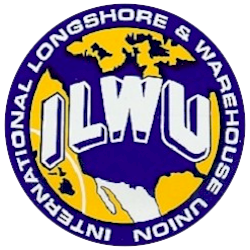
San Francisco Waterfront History

San Francisco Waterfront History
The San Francisco Waterfront
The Social
Consequences of Industrial Modernization
Part One; "The Good Old Days"
By Herb Mills
Page 23
Since access to these tanks, which were separated from one another by the "alley" of the propeller shaft ("shaft alley"), was quite restricted, the winch driver's skill became extremely important as loads were hoisted and lowered through the tank tops.
Great responsibility always rested with the winch drivers simply because each move of the cargo hook might endanger one or more other men. This was especially true of its movement in the hold. Considerable experience and skill was also required because there were different types of winches and a great number of differing designs.
To a lesser degree, this was also true of the standing gear of the vessels. Then, too, the state of repair and general condition of the winches and gear varied tremendously. Given such varying circumstances, the most demanding of situations occurred when the winch driver, because of the configuration of the hold and the location of the winch controls, could not see the holdmen or the area in which they were working.
When the winch driver was for these reasons driving "blind," he relied upon the signals and instructions of a "hatch tender" who had positioned himself so that he could see the operation and the signals of the holdmen. With these conditions set out, some detail as to the variety of cargo which might be encountered should next be offered.
To begin with, there was usually a considerable amount of "general freight," i.e., all sorts of differing sized crates and packages of varying weights shipped by small manufacturers, firms, or individuals.
Larger crated shipments of such variously sized and weighted items as machines and machine parts, furniture, glassware, dishes and ceramics, sports equipment, clothing, and relatively exotic or "specialty" food products were frequently encountered.
Still larger and variously packaged shipments of all sorts of food-from 25 pound boxes of Norwegian sardines through 100 pound cartons of New Zealand frozen meat to 750 pound barrels of Greek olives-were common. So, too, were shipments of wines, beer, liquor, cheeses, teas, cocoanut and tapioca, tropical fruits, candy, cookies, and specialty desserts. Very large shipments of a wide variety of canned goods were almost inevitable.